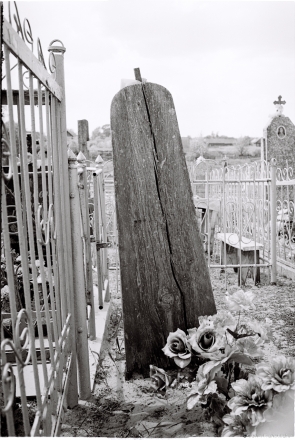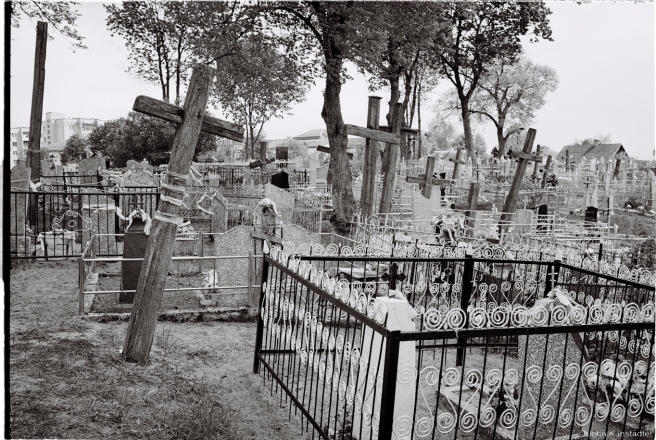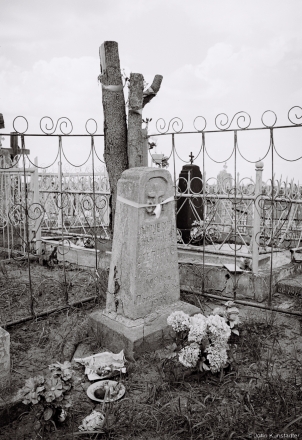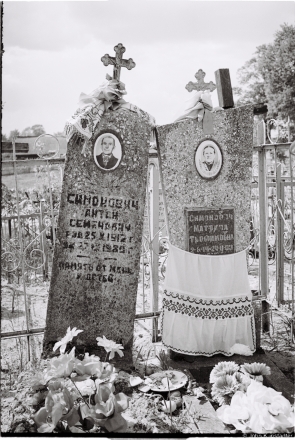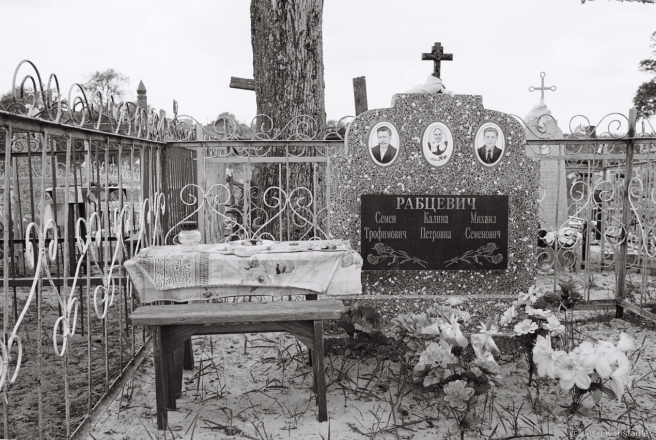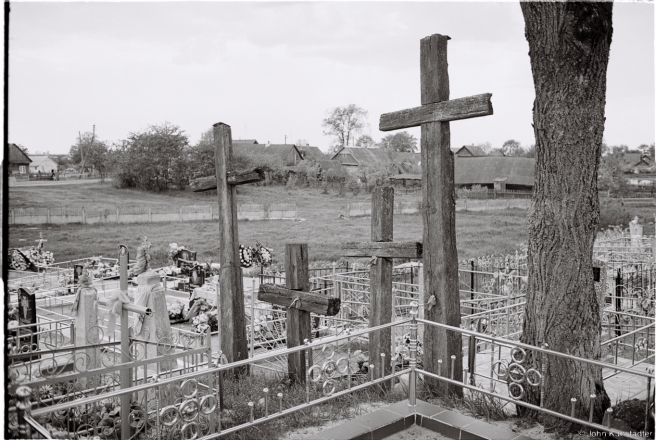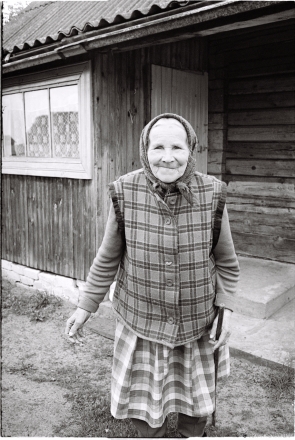To Tsjerablichy in Polesia via Stoubtsy (R11 road to Njas’vizh), Njas’vizh (Vuzhanka), Kljetsk (Ruda), Hantsavichy (Kukava, Raz’dzjalavichy, Khatynichy), Pinsk (Dabraslauka, Mokraja Dubrava, Lahishyn, Akhova, Kaladzjejevichy, Bjarozavichy (Parshavichy), Sadovy, Pinsk, Mjestkavichy) and Stolin (Fjadory, Bjelavusha, Davyd-Haradok) Districts, spring 2016.
Twice during the spring of 2016 I followed a roundabout route to Tsjerablichy in order to photograph previously unvisited churches and other sites as well as re-photograph the cemetery in Khatynichy which had been obscured by snow during the photo expedition with chairman of the Belarusian Society for the Preservation of Historical and Cultural Monuments Anton Astapovich (see photos of the day for April 22, 2016).
На Цераблічы праз Стаўбцоўскі (дарога Р11 на Нясьвіж), Нясьвіжскі (Вужанка), Клецкі (Руда), Ганцавіцкі (Кукава, Разьдзялавічы, Хатынічы), Пінскі (Дабраслаўка, Мокрая Дубрава, Лагішын, Ахова, Каладзеевічы, Бярозавічы (Паршавічы), Садовы, Пінск, Месткавічы) ды Столінскі (Фядоры, Белавуша, Давыд-Гарадок) раёны, два разы ўвесну 2016 г.
Raz’dzjalavichy cemetery drew us to make a visit since it had featured in the section on wooden grave markers of the landmark 2001 book “Беларускія народныя крыжы“ (“Belarusian Folk Crosses”) by Mikhas’ Ramaniuk and his son Dzjanis. Many of the wooden grave markers documented in the book have been lost or destroyed in the generation or more since the Ramaniuks made their study. However, the cemetery still gives one insights into Polesian burial traditions that are thousands of years old.
Міхась і Дзяніс Раманюкі выдатна даследвалі старажытныя й ўжо рэдкія драўляныя надмагільлі ды пахавальныя абрады ў Разьдзялавічах у сваёй кнізе “Беларускія народныя крыжы“ (2001). Хаця могілкі ў Разьдзялавічах значна зьмяніліся на працягу апошных дзесяцігоддзяў, можна было знайсьці ўзоры адметных спрадвечных (дахрысьціянскіх) ды ўжо вельмі рэдкіх звычаяў пахаваньня.
Wooden marker without cross arms: possibly a traditional Polesian marker for the grave of a suicide.
Драўлянае надмагільле без папярэчнага элементу: традыцыйны палескы помнік самазабойцу.
Ribbons tied around crosses and trees.
Крыжы й дрэвы зьвязаныя стужкамі.
Traditional markings: a runner for a man’s grave and an apron for a woman’s grave.
Ручнік для надмагільля мужчыны й фартушок для надмагільля жанчыны.
Food laid out in preparation for Easter and Radaunitsa.
Падрыхтоўка да Вялікадня й Радаўніцы.
Crosses of Belarus (part LVIII): forest of crosses.
Крыжы Беларусі (частка LVIII): лес крыжоў.
Mrs. Hanna (born 1928), who recounted the history and traditions of the Raz’dzjalavichy cemetery.
Спадарыня Ганна (1928), якая жвава разтлумачыла гісторыю й традыцыі могілак у Разьдзялавічах.
